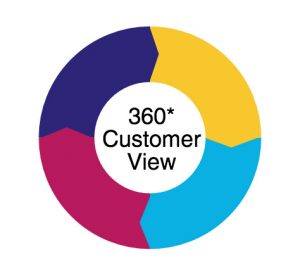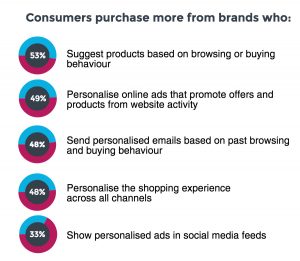3 Ways to Drive Higher ROI through Data-driven Marketing
Data is at the heart of good marketing. When data drives your marketing, the average return on investment is a massive 224%! (VB Insight)
Higher ROI can be gained by just small improvements. According to feedback from research conducted with over 3,000 marketers, if your business has a four stage customer acquisition funnel, and you improve each phase of the funnel by just 5%, the overall improvement is 22%.
Customer data is now recognised as the lifeblood of organisations of all sizes and across all industry sectors. However, if you feel as if you are lost in a labyrinth of data, here are some key ways that better marketing and better data can drive more revenue.
1 Knock Down Barriers
You can have an abundance of data, but if it’s in different systems, in various formats, or it’s in systems that don’t provide you with good access, then you’re not getting the value from it.
Let’s say you have information stored in your billing system and another database which contains customer service records, both with different but complementary information. Each system contains important details such as contact details and other basic information, along with more detailed information which could be behavioural information; frequency of purchase, transaction value, engagement with marketing campaigns (click-throughs).
A data management solution should be employed to combine multiple data sources and automate data quality processes in order to:
- Cleanse and standardise data so integration can be more easily achieved
- Consolidate customer data into a single record
- Identify duplicate data records
- Monitor and maintain the accuracy and integrity of customer data
- Complete and enrich customer data with missing and useful data (email address, telephone, SIC, etc.)
2 A Holistic, Single Customer View
By integrating these data sources into a single staging repository, customer details come together into a holistic, 360-degree view that represents all interactions with every customer. This is particularly important in B2B markets, where customers may have several trading sites, and multiple accounts with you.
With this singular customer view (SCV), you can begin to analyse the data set to create customer insight and find answers to key questions such as:
- Who are my customers?
- What path can be attributed to them becoming a customer?
- What products have they purchased first, and what do they go on to buy later?
- How do I keep my best customers loyal?
- What channels do my customers and prospects prefer?
- What opportunities are there to maximize customer value through upsell or cross-sell offers?
- When is a customer likely to become a churn risk?
- How much should I invest to acquire and retain customers?
This knowledge is power, and will inform the development of a framework to plan acquisition and retention programmes.

89% of brands have challenges creating a single customer view (Experian)
3 Customers Demand Personalised Experiences
Even in B2B markets, customers ultimately want to be understood by the brands they choose. Your customers expect a seamless experience with your company, they want personalised, relevant offers and they are more responsive to messages when sent through their preferred channels.
Recent research into the collection and use of customer data showed that if a company could show that the marketing data collected allowed companies to personalise offers, provide better customer service and prevent customers having to give the same information to multiple people – then it was a good thing.
The research also shows that 45% of consumers are more likely to shop on a site that offers personalised recommendations, and 56% are more likely to return to a site that recommends products. (Invesp)
When deciding which types of personalisation to use, consider the following statistics from MyBuy’s 2015 Personalisation Consumer Survey.

As well as the benefits of personalisation, there are downsides in failing to do so. A survey by Gigya revealed that 67% of individuals have unsubscribed from an email list when sent irrelevant information. An additional 43% ignored future communications from the company, and 32% stopped visiting the company’s website or mobile app.
We’ve helped brands in many different industries overcome issues, making their data an essential part of supporting lead generation, customer retention and more so to achieve a sustainable increase in ROI
If you’d like to find out more about how to harness your data resources, please get in touch via the contact form, on 01296 640936 or [email protected]




